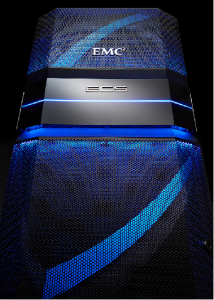This past April, my father reached two important milestones – he turned 70 and retired from a 40-plus year career in food science. He is now planning to head back to Spain to complete the Camino de Santiago – or the Way of St. James – a journey he started in 2014. Unfortunately he had to stop 150 miles into the 500 mile trek because of severe back and hip pain due to the emergence of degenerative disc disease. After working with his physician to manage this new condition, he started to prepare for the upcoming trip by walking between 5 and 10 miles three times a week. Along with this training came other ailments that would be expected with anybody his age: pulled muscles, strained knees, and “light-headedness.” This last ailment can be attributed to another condition he happens to have – Type 2 Diabetes. And so it goes, as he gets older and tries to maintain a high level of activity, he will suffer more ailments, and spend more time and money (via Medicare benefits) managing these chronic conditions.
And he will not be alone. My father was born in 1946 and is thus a first year baby-boomer, the first wave of new Medicare beneficiaries in which about 10,000 enroll every day. The Congressional Budget Office expects over 80 million Americans will be Medicare eligible by 2035, an almost 50% increase in enrollment from 2015. The cost per beneficiary is expected to increase even more as each patient will have multiple chronic conditions to manage; per the National Council on Aging:
- About 68% of Medicare beneficiaries have two or more chronic diseases and 36% have four or more.
- More than two-thirds of all health care costs are for treating chronic diseases.
The US government and the healthcare industry are well aware of the current “silver tsunami” and planning has been underway.
For the past 7 years, since the passage of the Hi-Tech provision in the American Recovery and Reinvestment Act (ARRA) in 2009 and the Medicare Shared Saving Program (MSSP) in 2011 the ground work has been laid to implement various programs and incentives to distribute the efforts to manage the cost of delivering healthcare to an ever expanding beneficiary population. The prolific adoption of electronic health records technology by healthcare providers and the reorganization of reimbursements to these providers – from a fee-for-service to an outcomes based model – have combined to become a catalyst for a digital revolution in healthcare.
Government led healthcare reform programs like Accountable Care Organizations (ACO), the Patient Centered Medical Home, and the Precision Medicine initiative are predicated with having a digital technology platform that can use the demographic, financial, clinical and genetic data acquired from the vast population of patients to develop evidence-based plans of care that are specifically tailored based on the genetic disposition and the disease(s) of a given patient.
 Regardless of the industry, product or service, a disruptive technology that drives innovation through digitization requires a re-assessment of the infrastructure that supports it; the healthcare industry is no different. As healthcare providers have implemented electronic medical records systems, deployed enterprise imaging solutions, piloted next generation sequencing programs, and developed clinical informatics capabilities, new infrastructure requirements and operating modes have emerged. Furthermore, in response to the evolving markets and reimbursement models explained above, many healthcare entities – providers, payers, and pharmaceuticals alike – have consolidated through mergers and acquisitions which also necessitate re-evaluating infrastructure architectures in order to rationalize operational capabilities, drive utilization efficiency and decrease both operational and capital costs.
Regardless of the industry, product or service, a disruptive technology that drives innovation through digitization requires a re-assessment of the infrastructure that supports it; the healthcare industry is no different. As healthcare providers have implemented electronic medical records systems, deployed enterprise imaging solutions, piloted next generation sequencing programs, and developed clinical informatics capabilities, new infrastructure requirements and operating modes have emerged. Furthermore, in response to the evolving markets and reimbursement models explained above, many healthcare entities – providers, payers, and pharmaceuticals alike – have consolidated through mergers and acquisitions which also necessitate re-evaluating infrastructure architectures in order to rationalize operational capabilities, drive utilization efficiency and decrease both operational and capital costs.
Working directly with healthcare customers, collaborating with healthcare software vendors, and partnering with IT service providers, EMC has been on the front line to provide architectural guidance and infrastructure solutions to support this digital revolution and its emerging infrastructure requirements. A key infrastructure solution to support the digitization revolution in healthcare is a highly durable, geo-distributed, performant storage platform that will work with legacy monolithic systems using file system interfaces as well as cloud-native distributed applications using standard storage APIs like AWS S3 or OpenStack Swift.
 EMC’s Elastic Cloud Storage system (ECS) is a modern object storage platform that does just that…and more. Just as important, the ECS object platform can be used for a myriad of use cases specifically for the healthcare industry to support:
EMC’s Elastic Cloud Storage system (ECS) is a modern object storage platform that does just that…and more. Just as important, the ECS object platform can be used for a myriad of use cases specifically for the healthcare industry to support:
- Innovative technology platforms which enable coordinated and accessible medical services such as outlined by the Patient-Centered Medical Home program
- Collaboration and data sharing as needed for programs such as the Accountable Care Organization initiative
- An increase in IT operational agility using a storage platform that can be provisioned with cloud-based API’s
- A decrease in costs through storage utilization efficiency at scale using modern data protection and replication methods
In my follow-up blog entries here, I will provide more details on the functional capabilities of ECS as well as map these capabilities to specific use cases that are driving the digital revolution to take on the challenges of delivering collaborative and personalized healthcare services to an aging population with multiple complex chronic conditions while driving down IT operational costs as well as the overall cost of the healthcare system.
Examples of the use cases I mentioned above include various new technology trends like the emerging Internet of Things (IoT) solutions that support remote patient monitoring, telehealth, and behavior modification tools to help manage chronic diseases; data lake functionality with the Hadoop ecosystem for population and precision health based analytics programs; and cloud-native development efforts to launch distributed mobile applications that can capture and access data from any location.
I look forward to exploring these use cases and examining how ECS’s unique capabilities will help our healthcare customers move towards meeting their technical, operational, and “digitized-mission” goals.